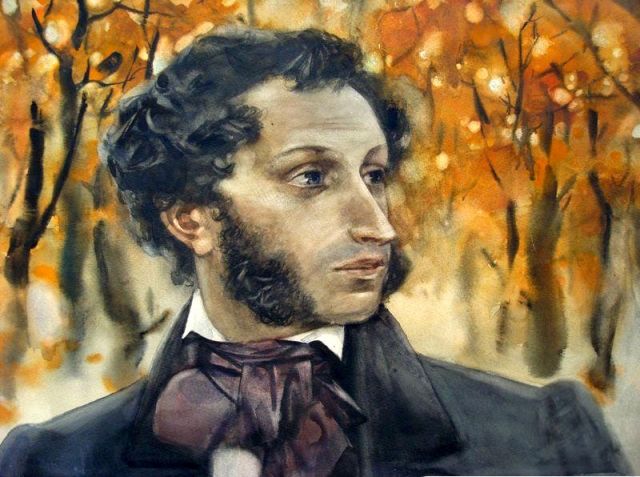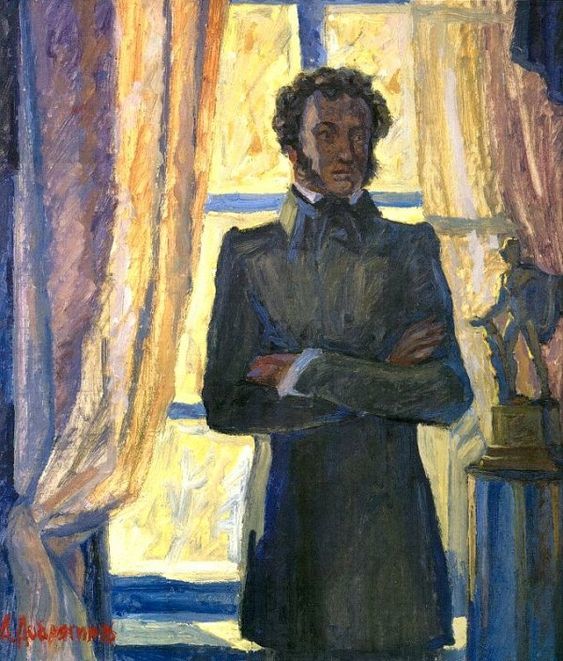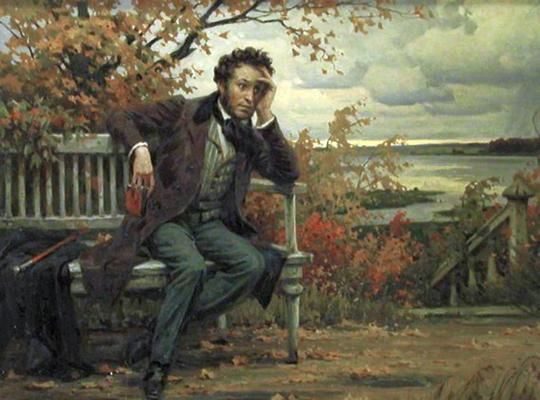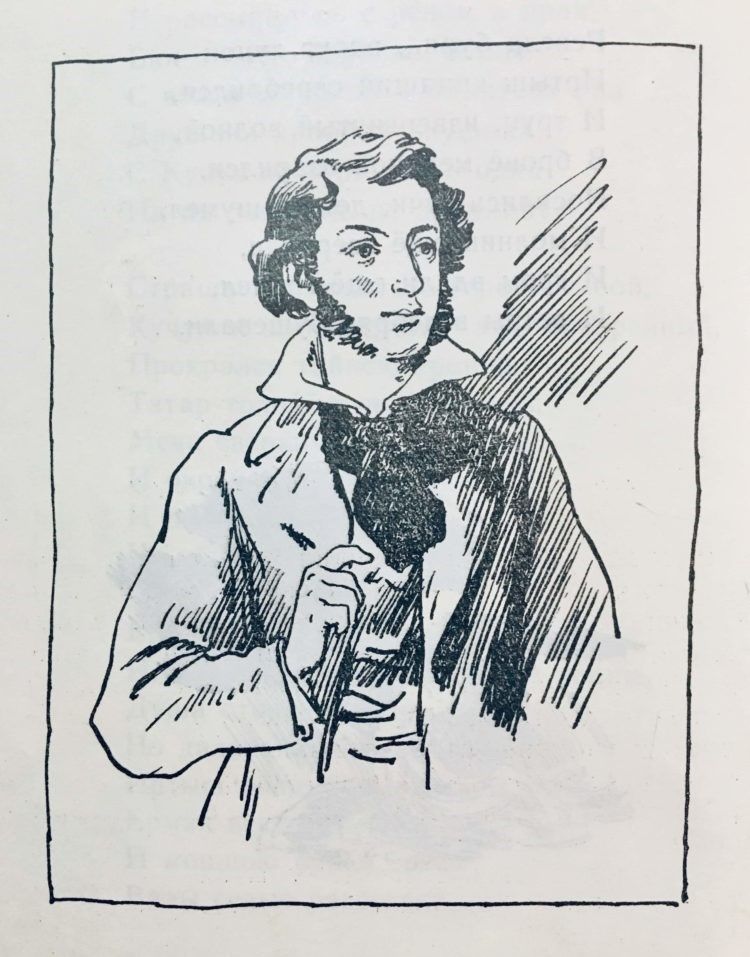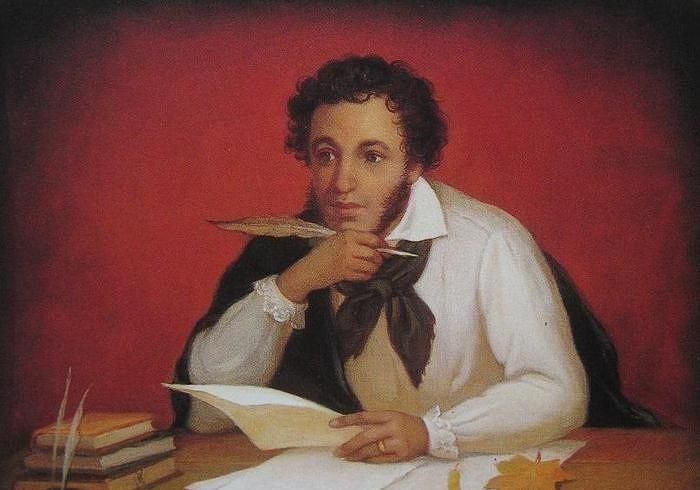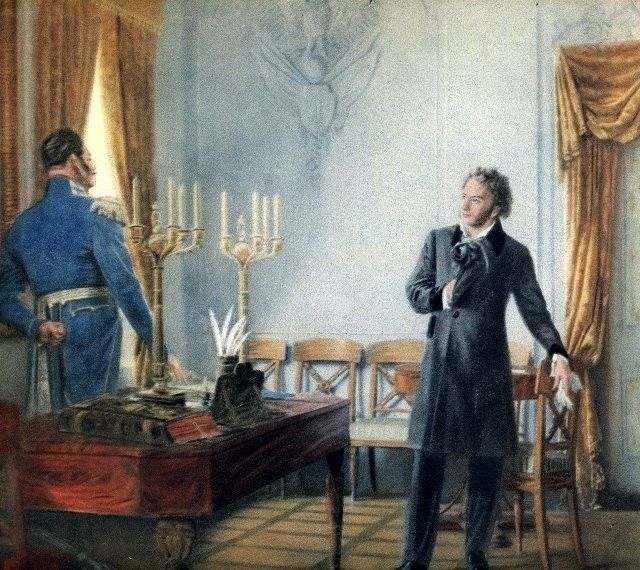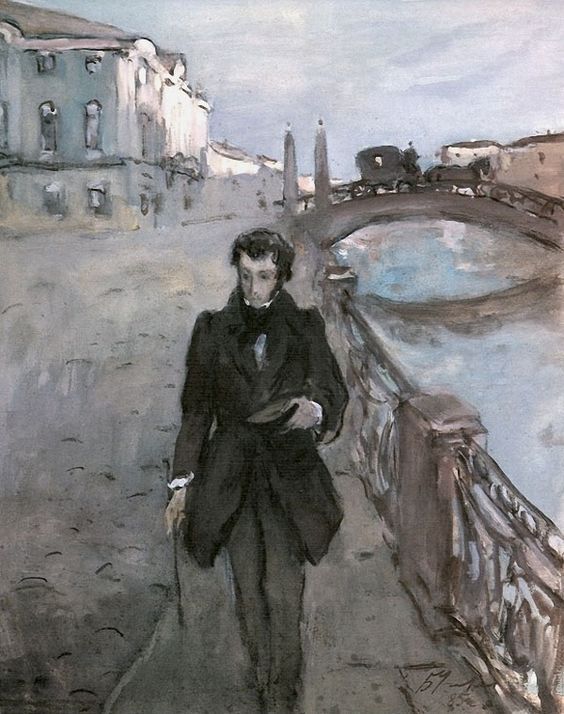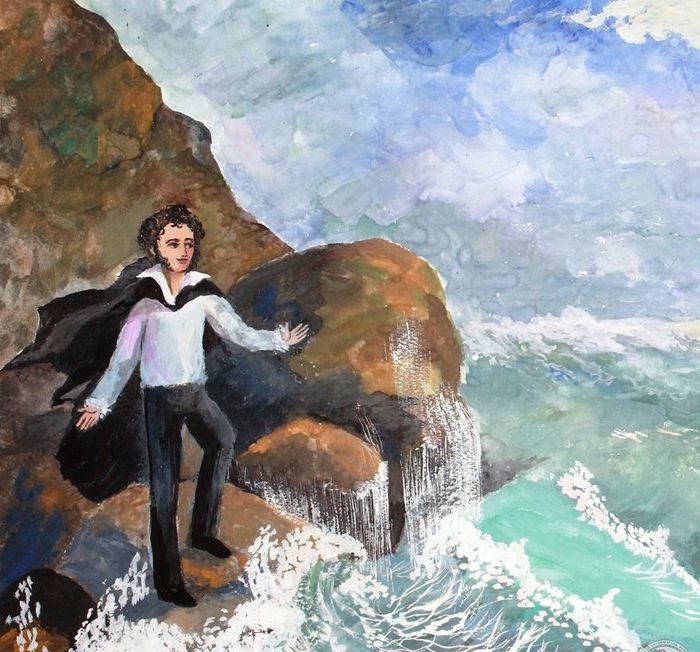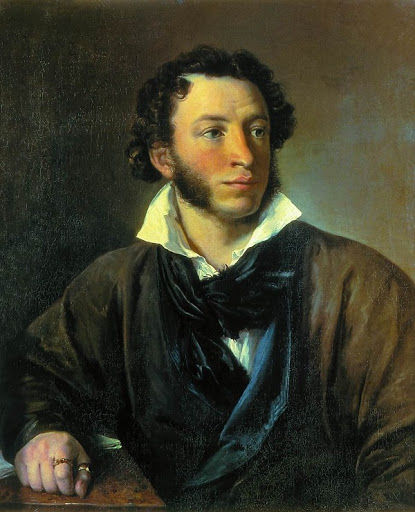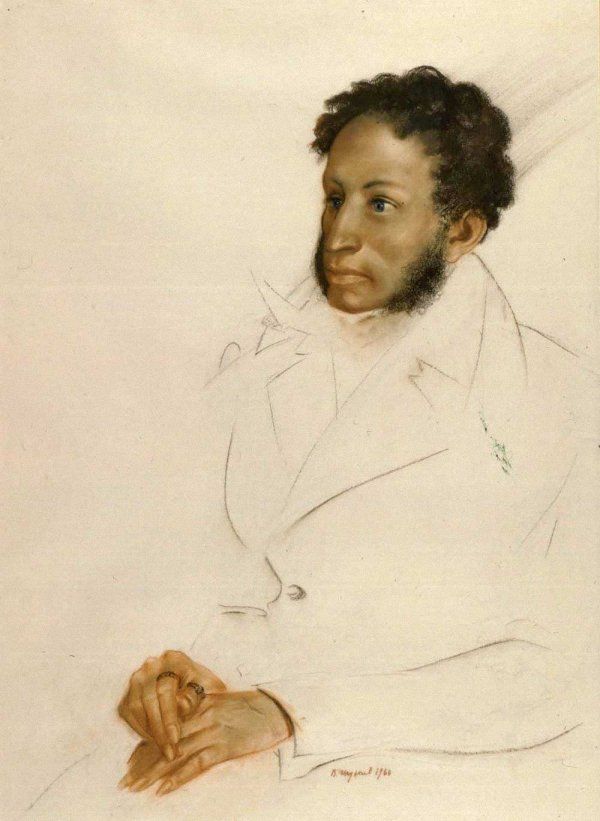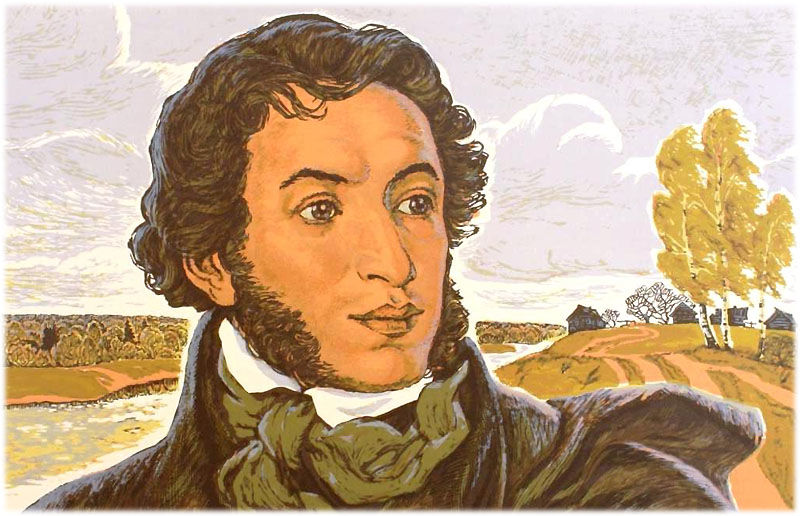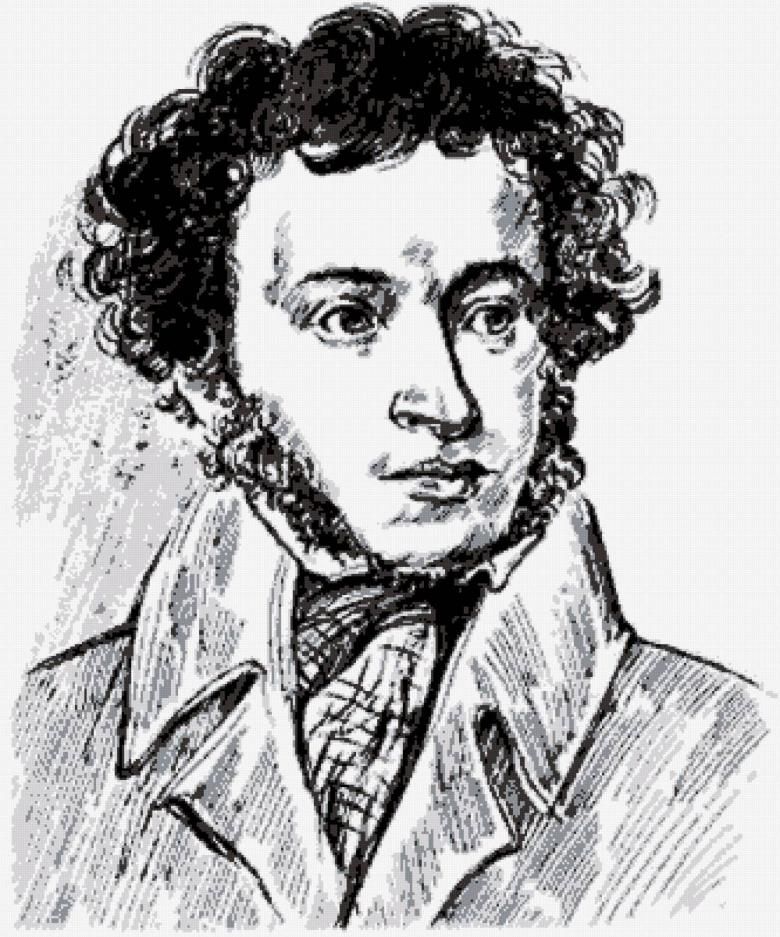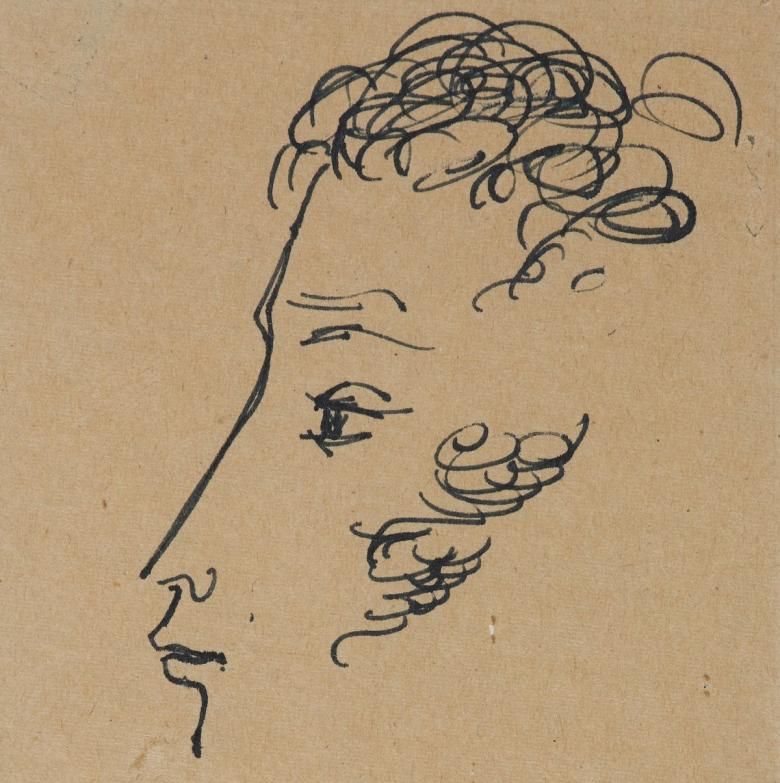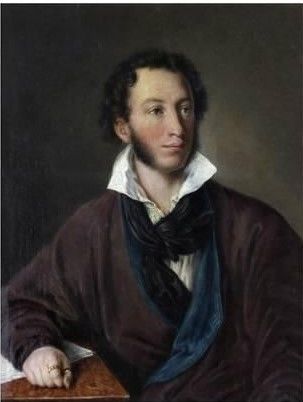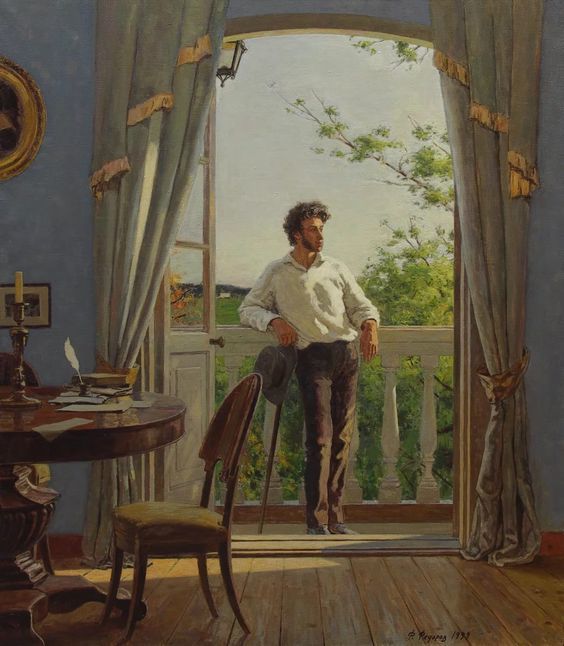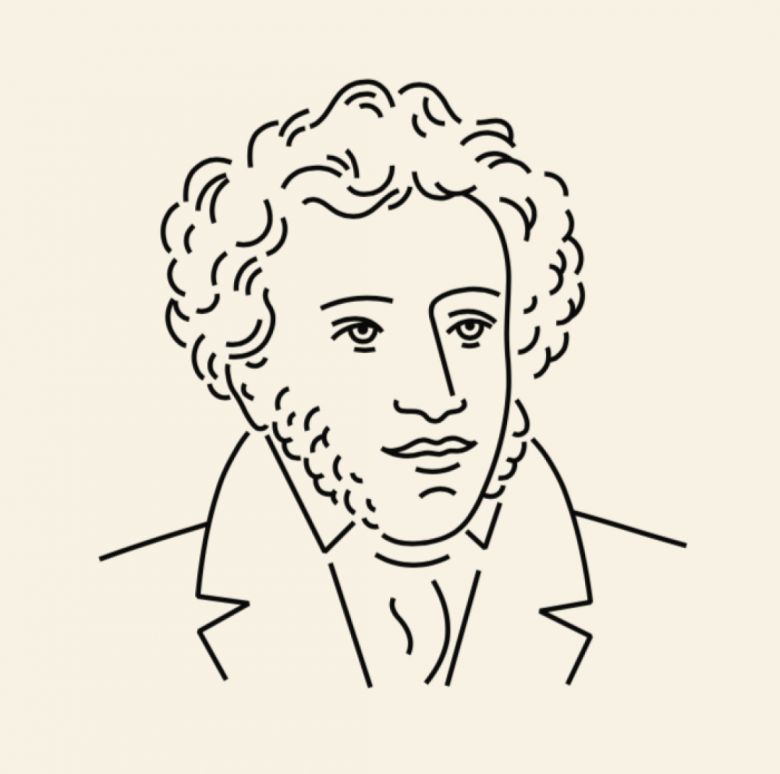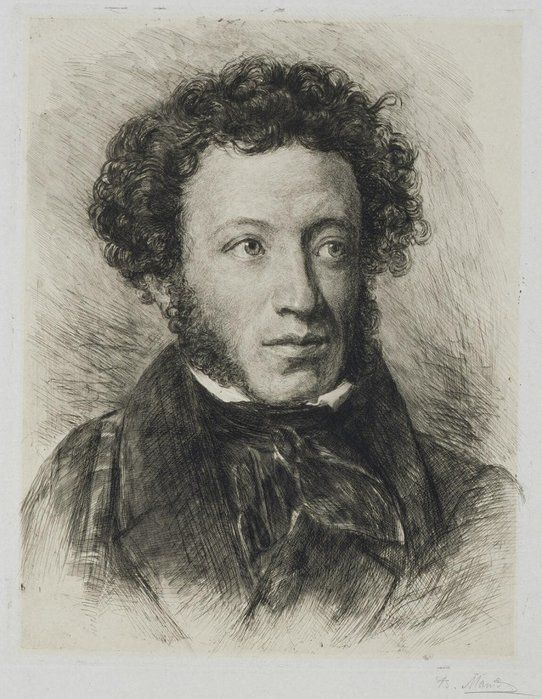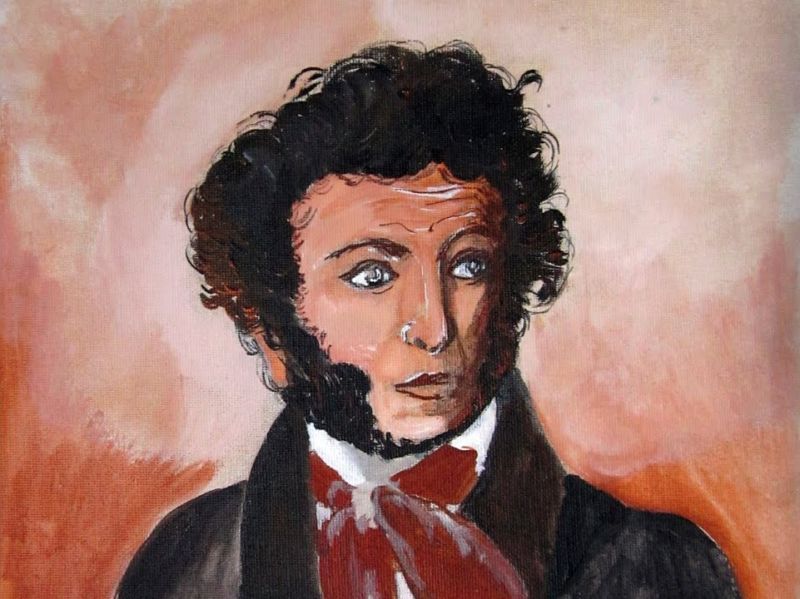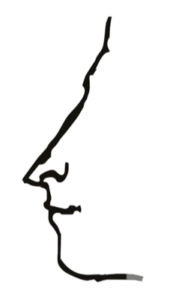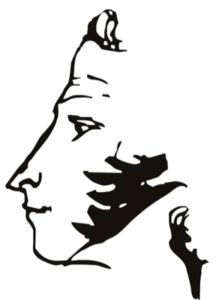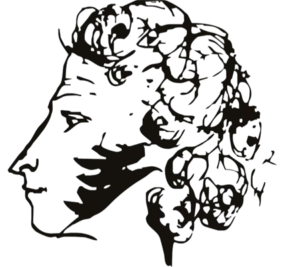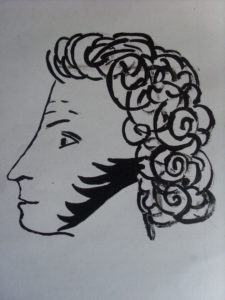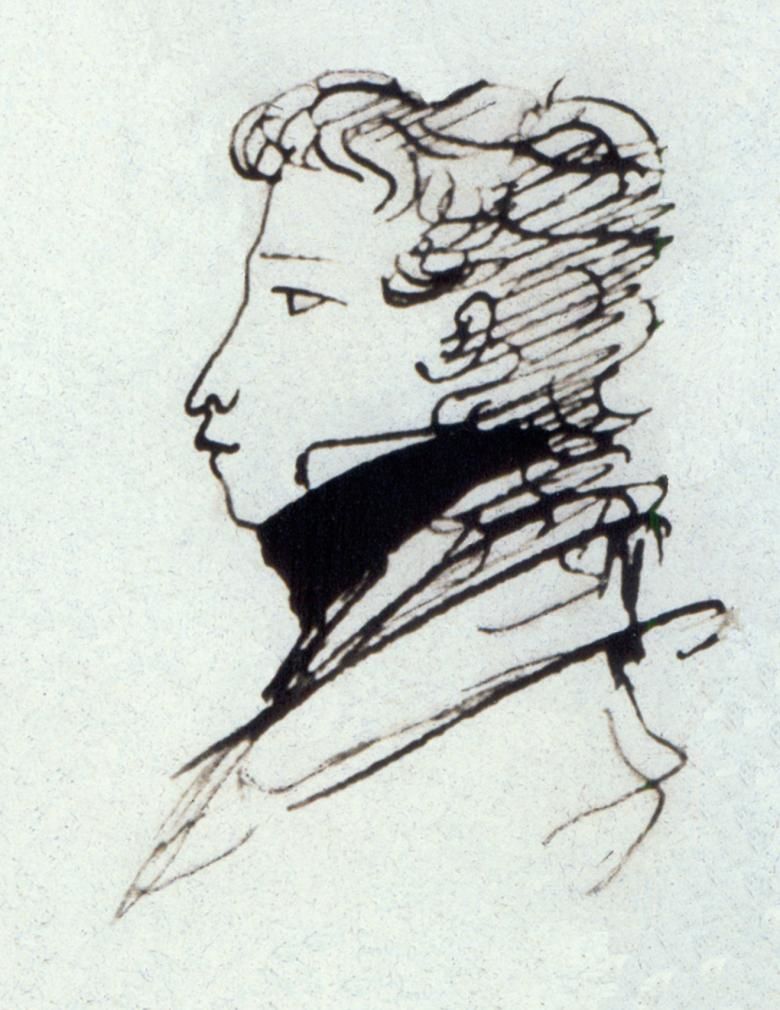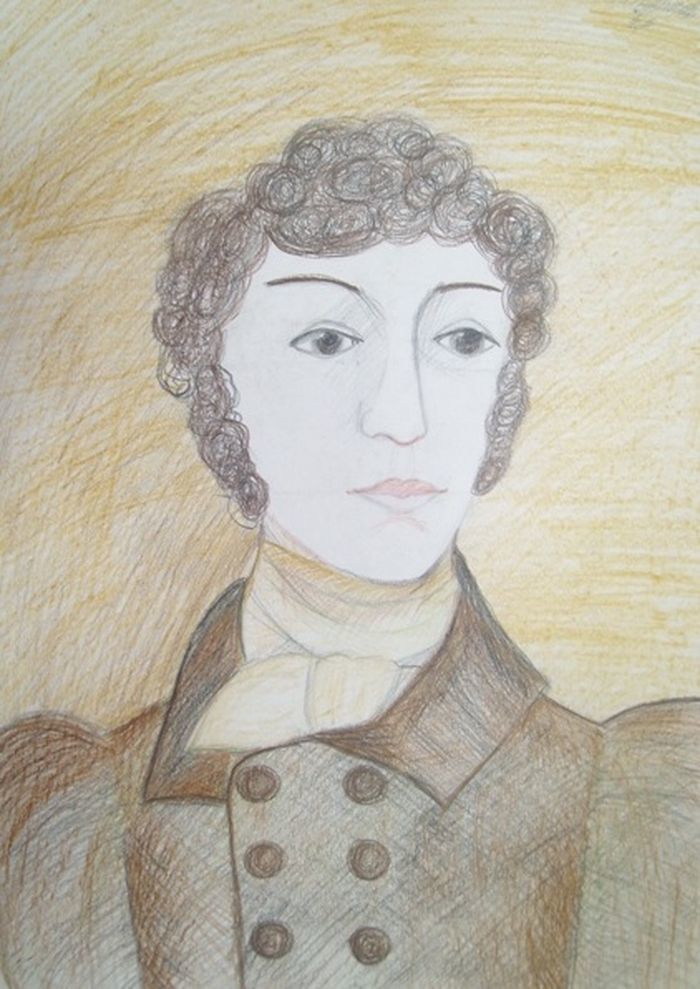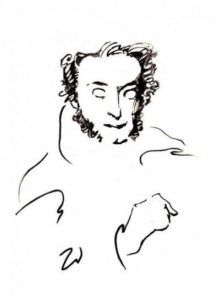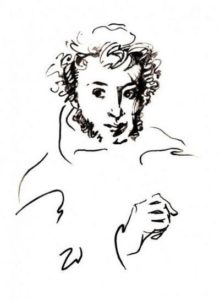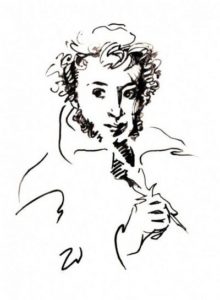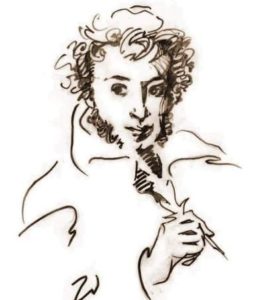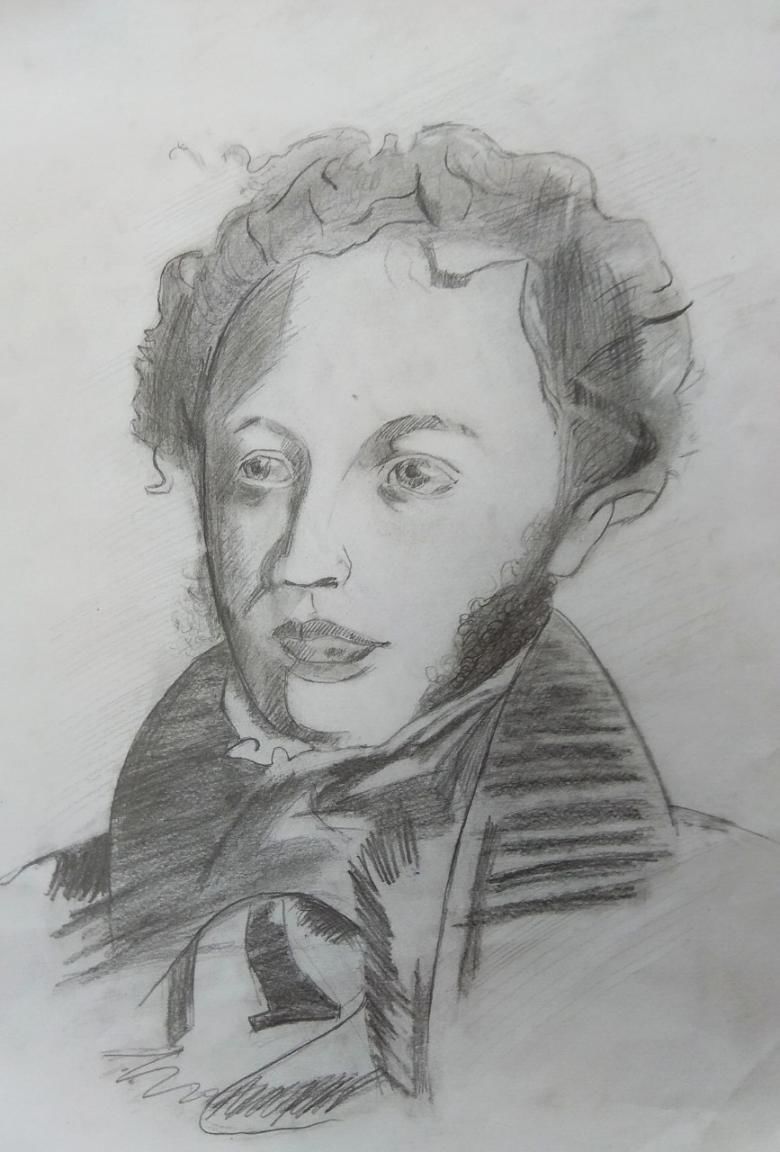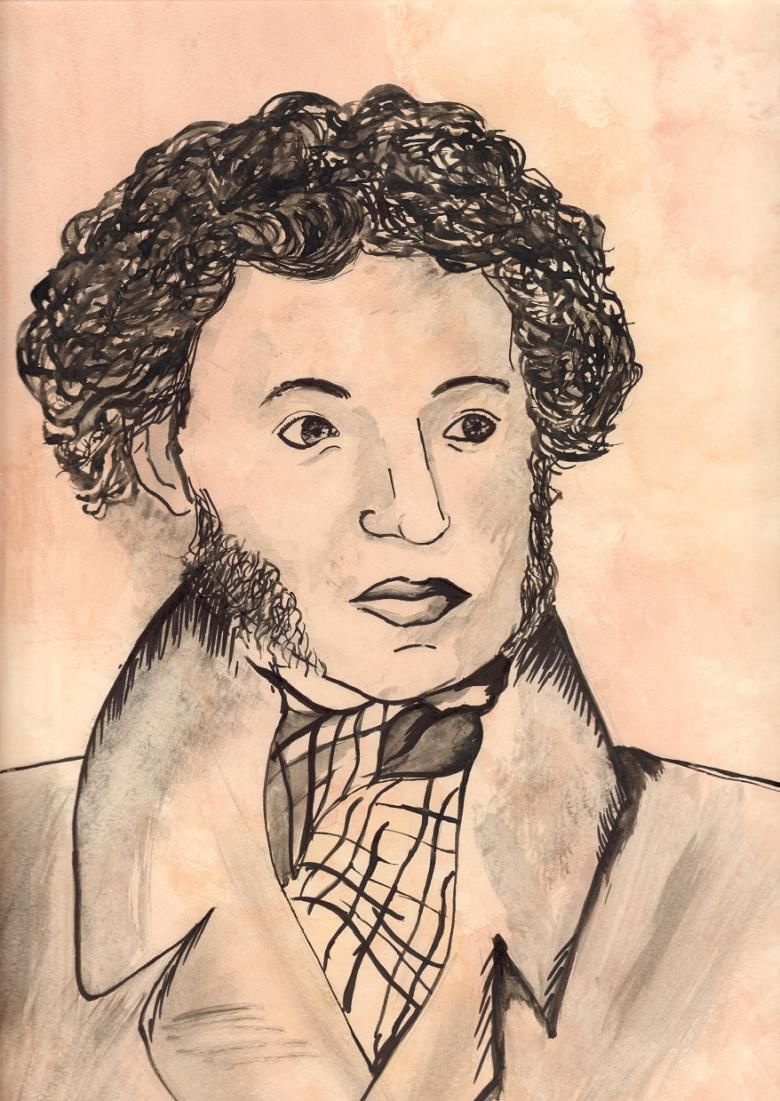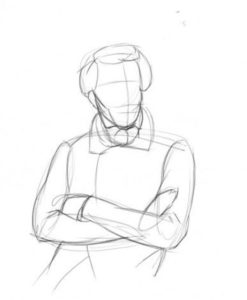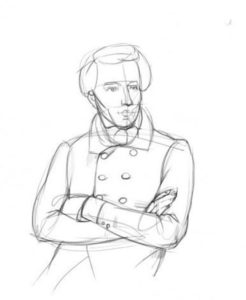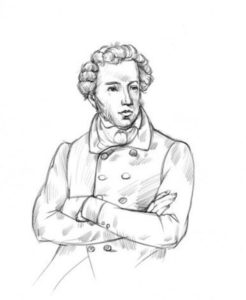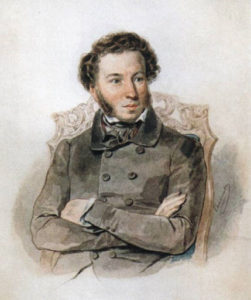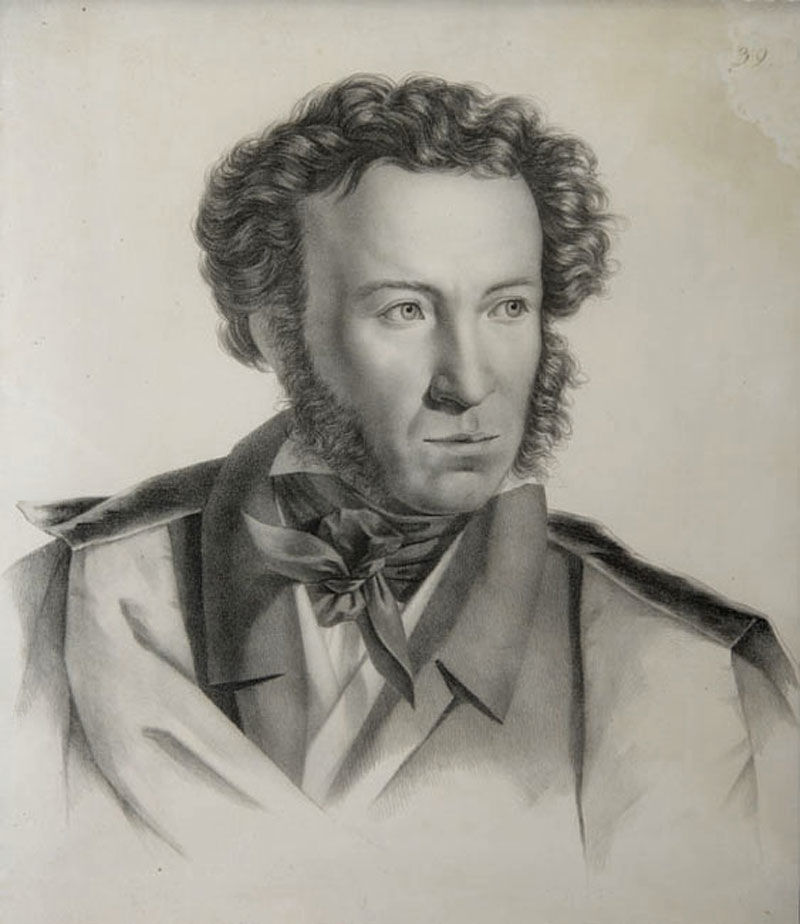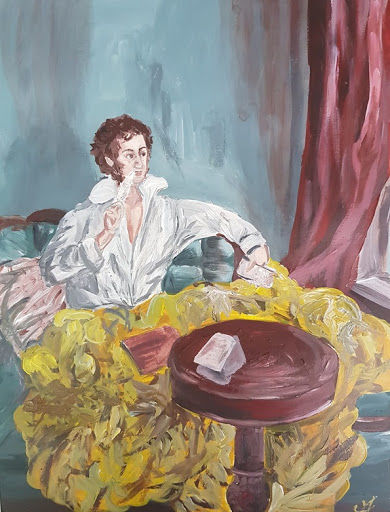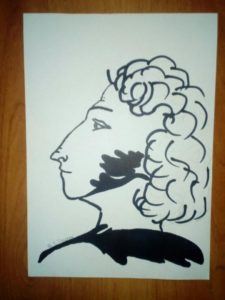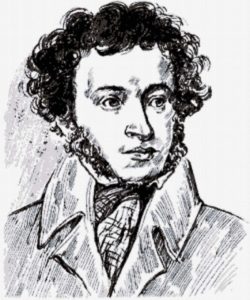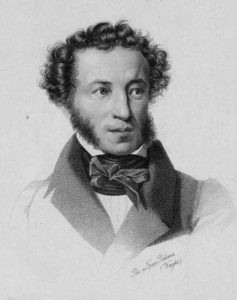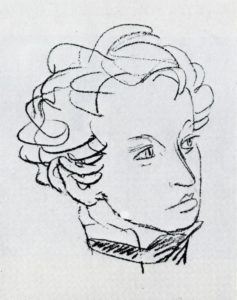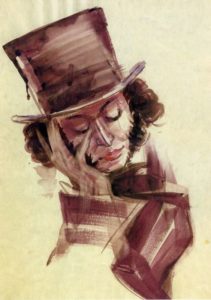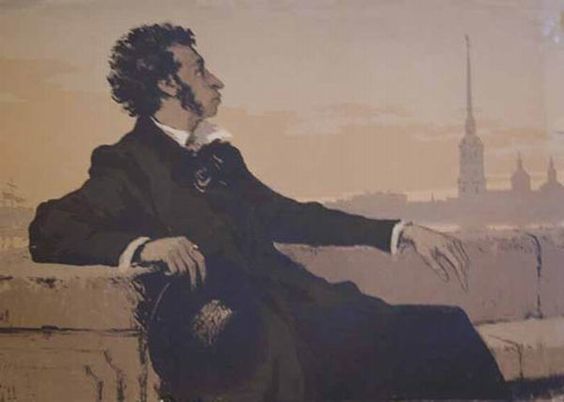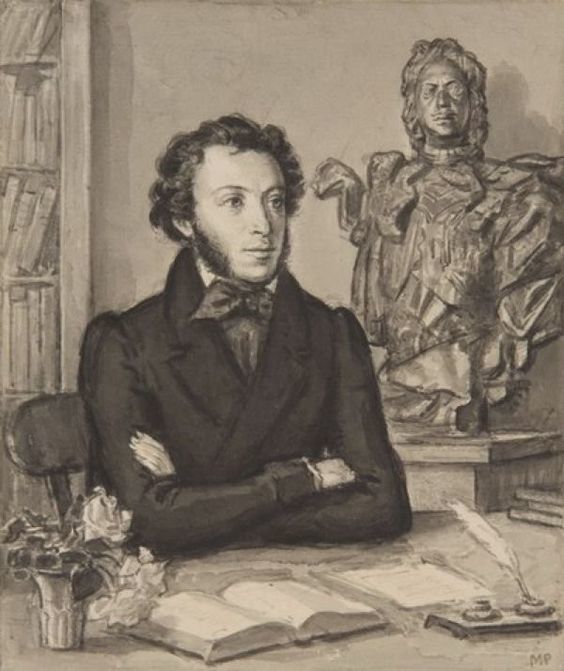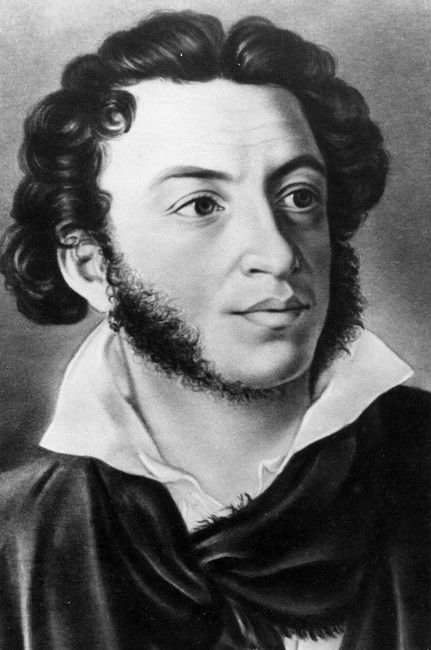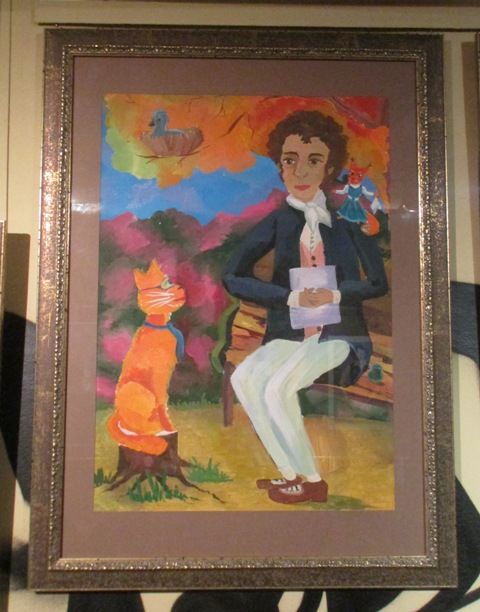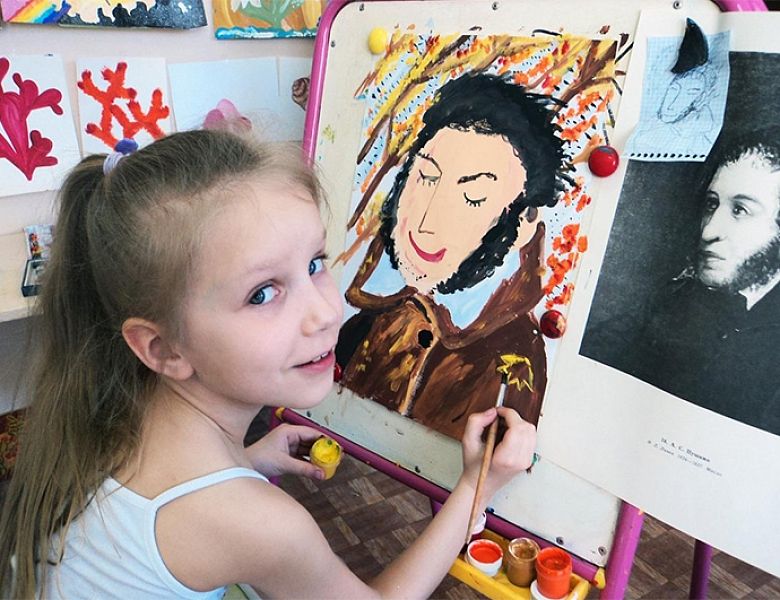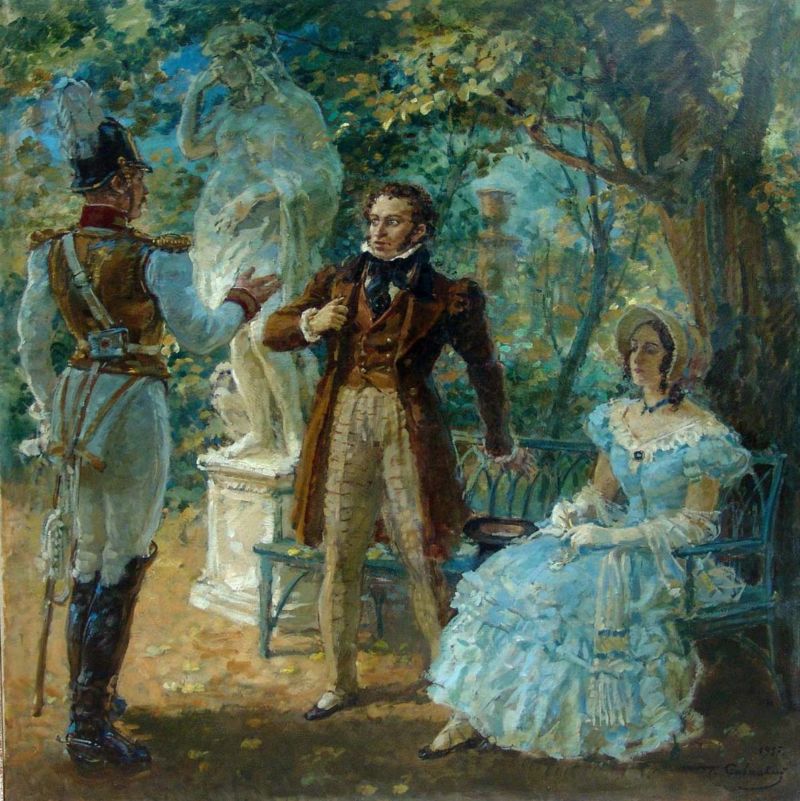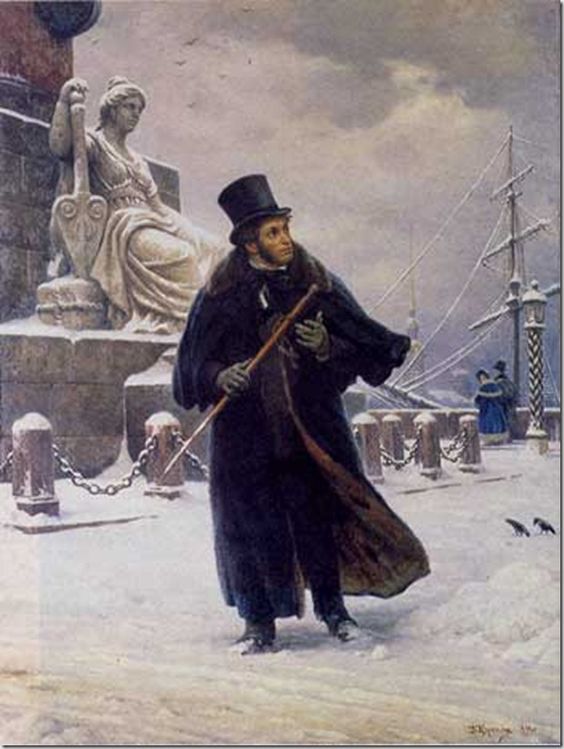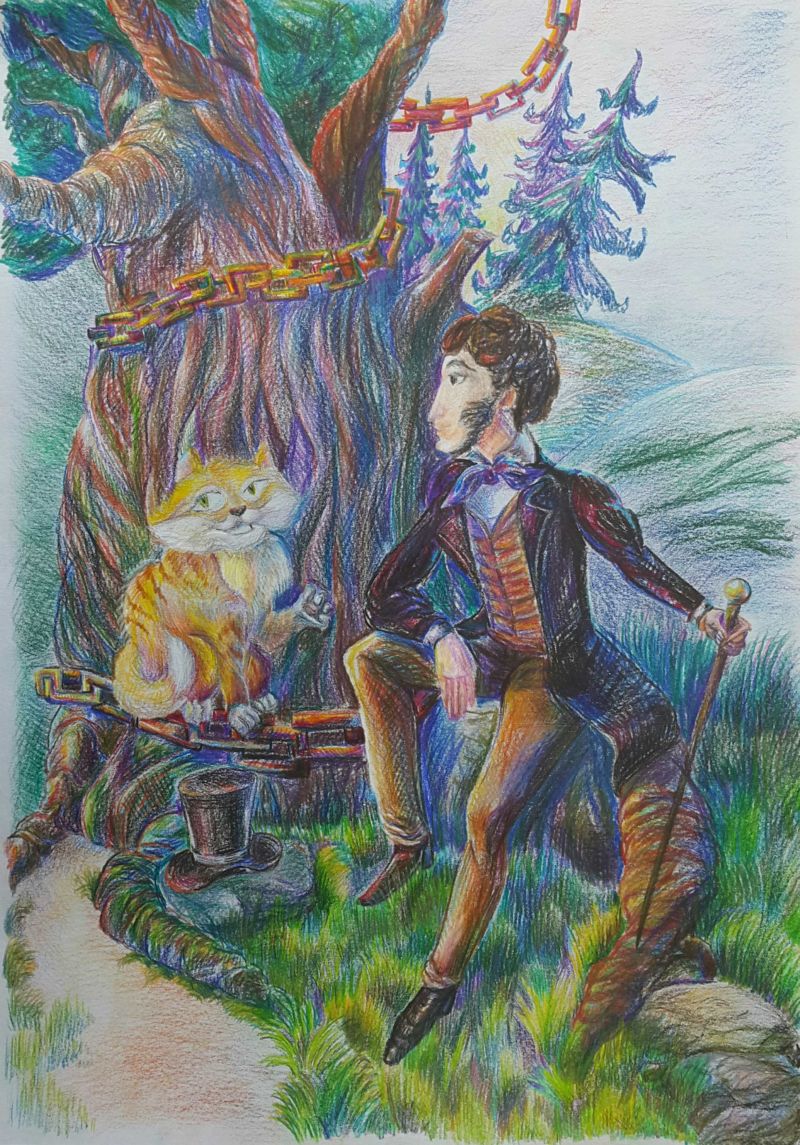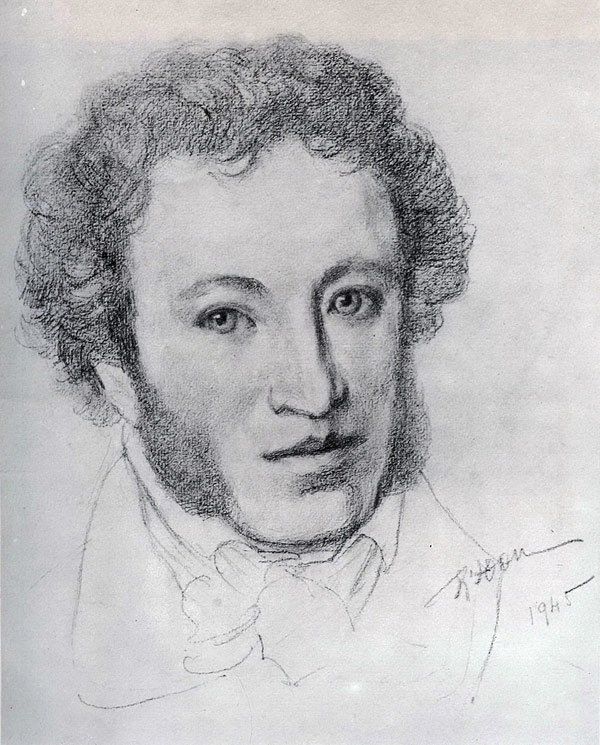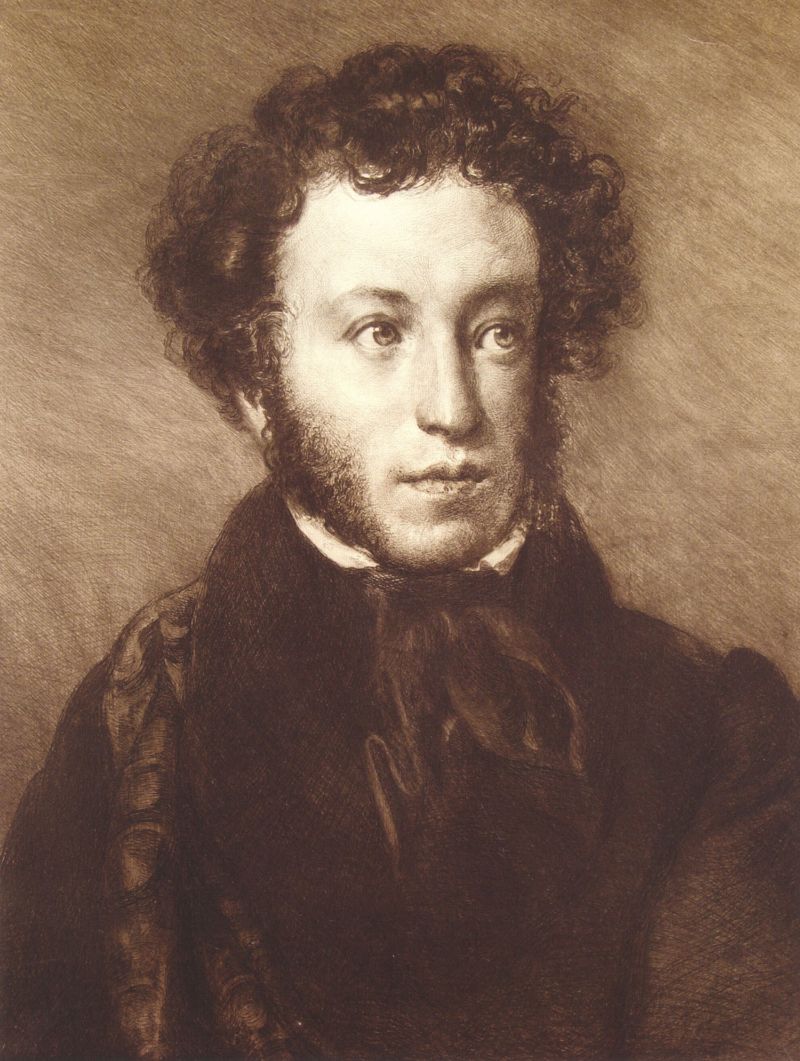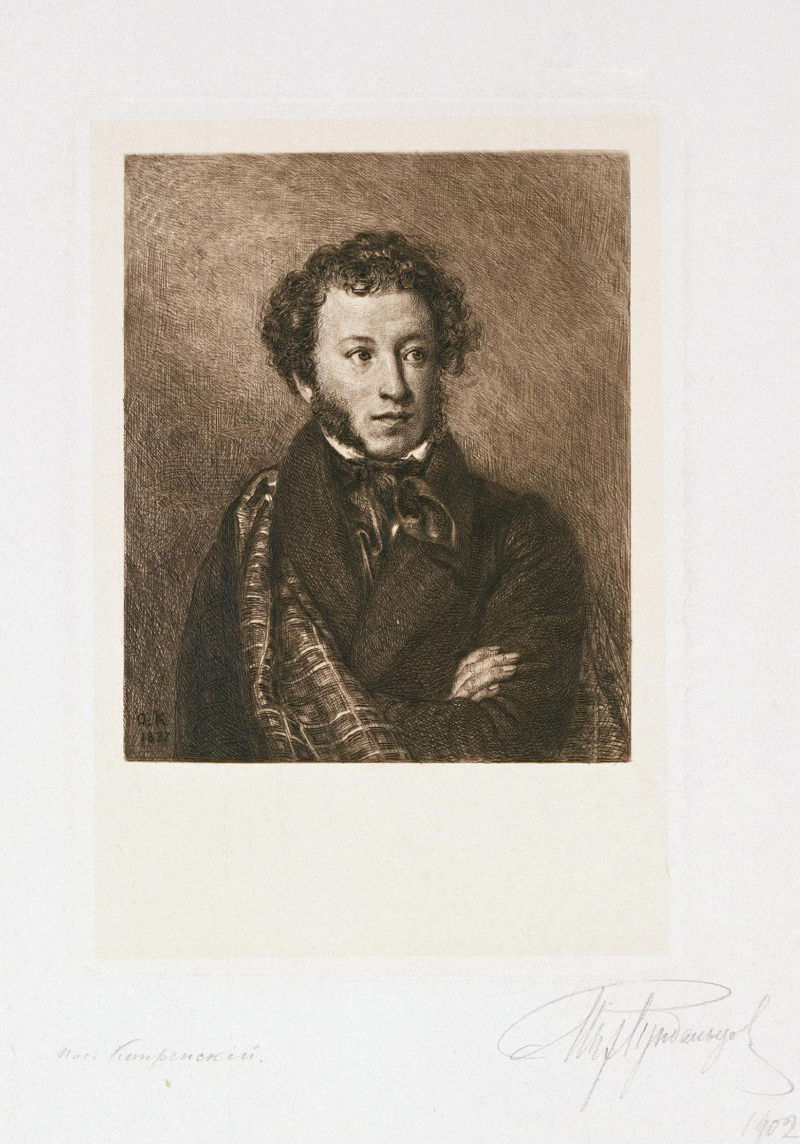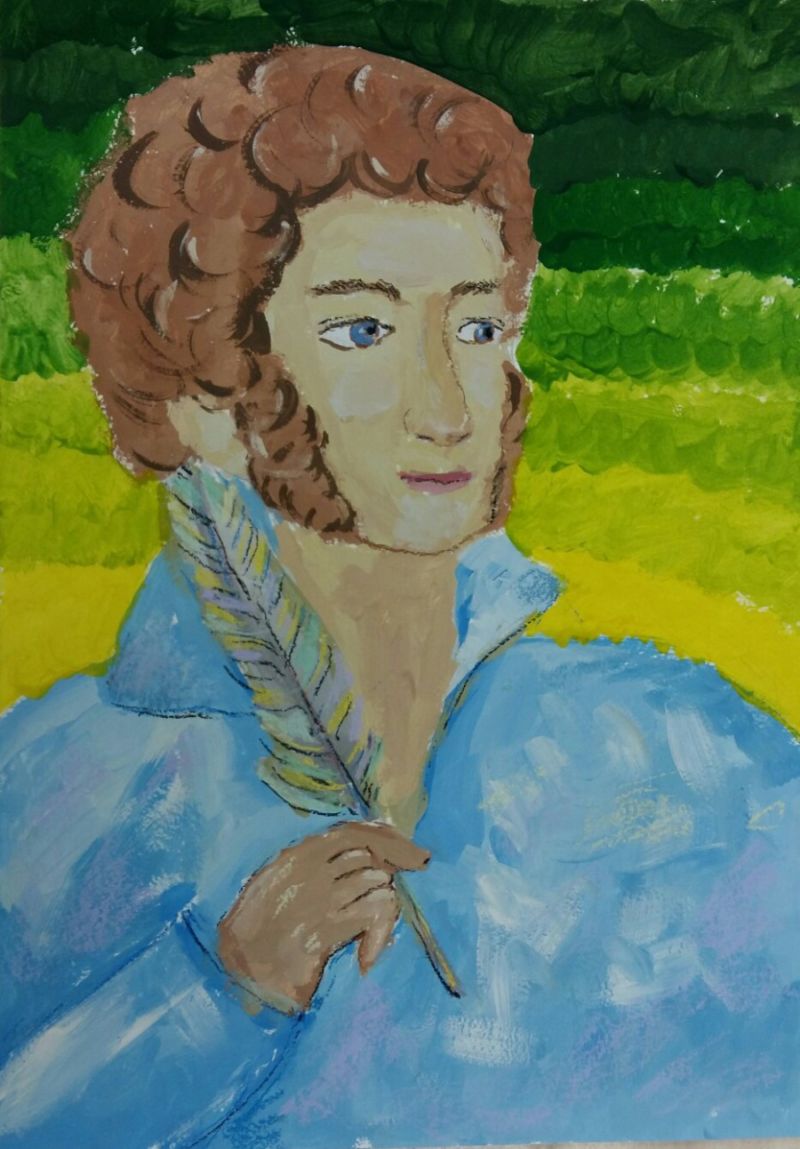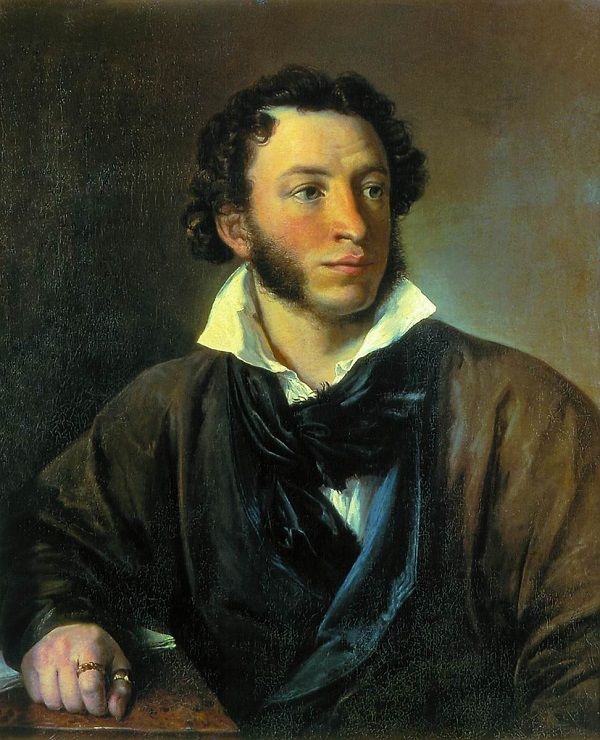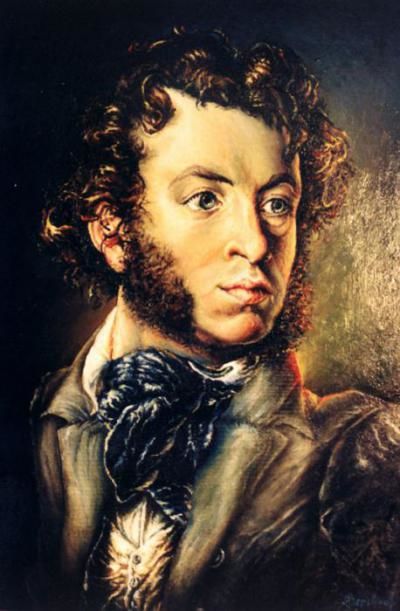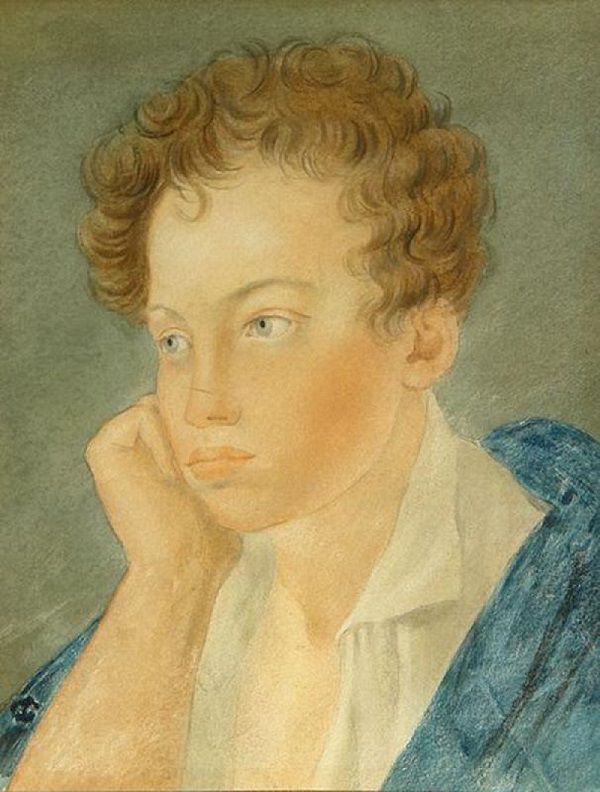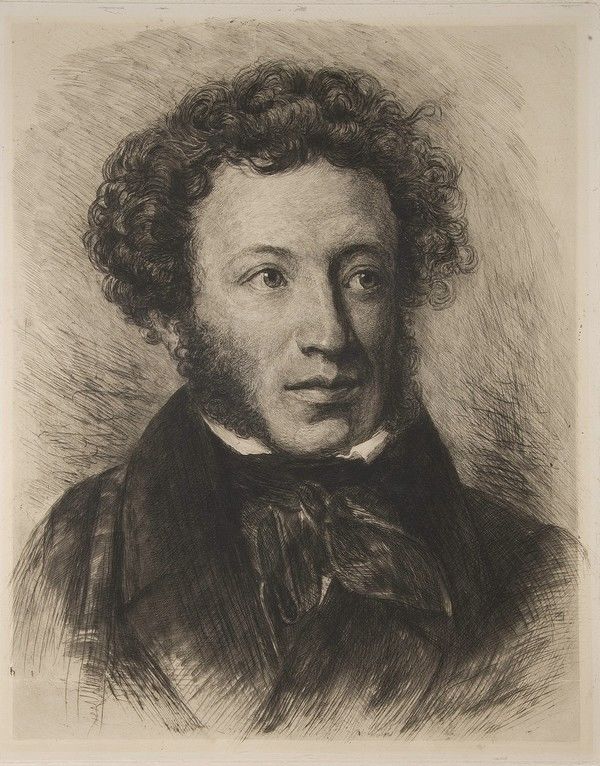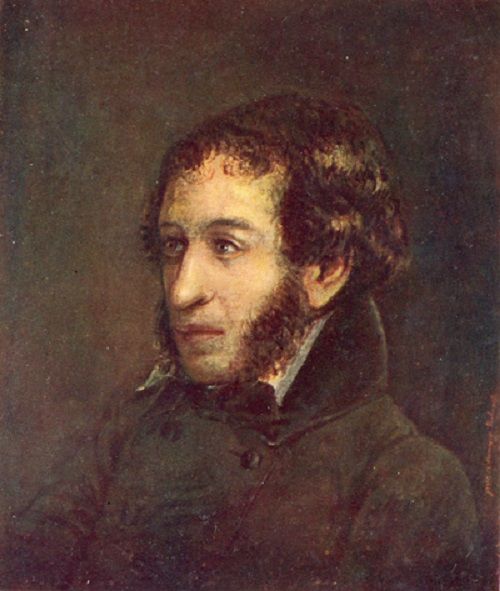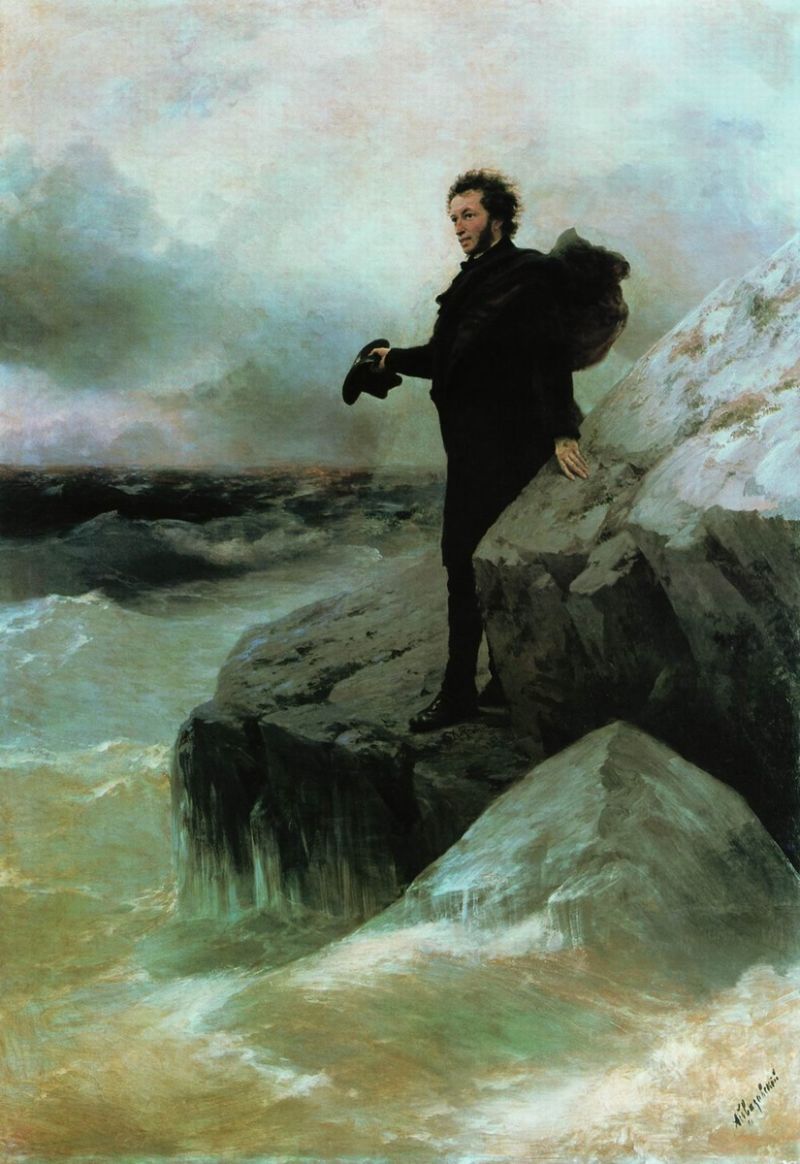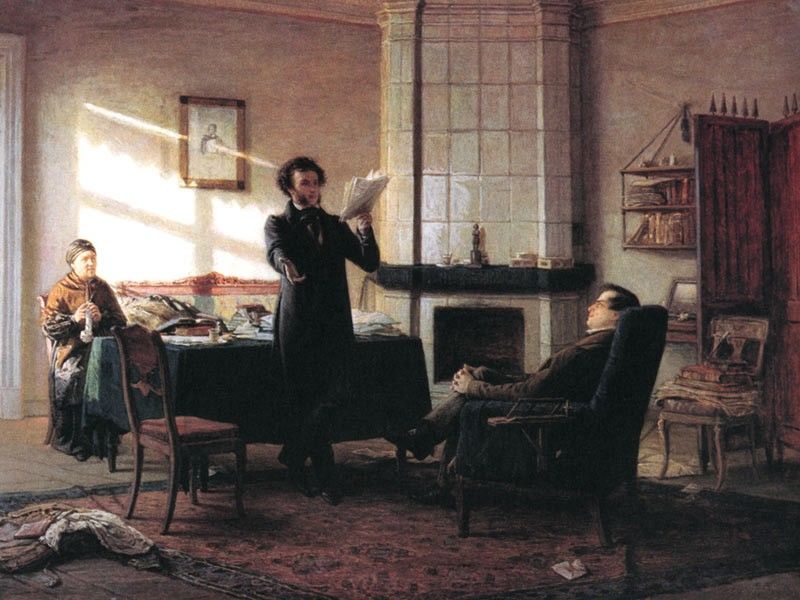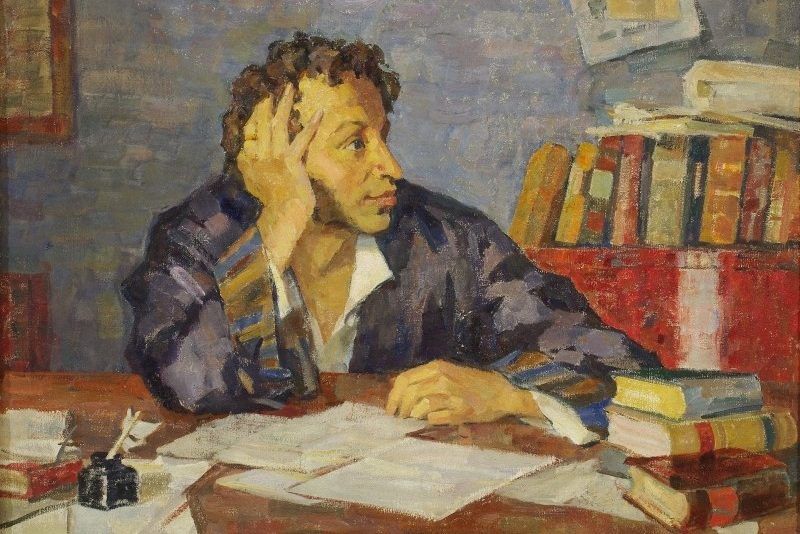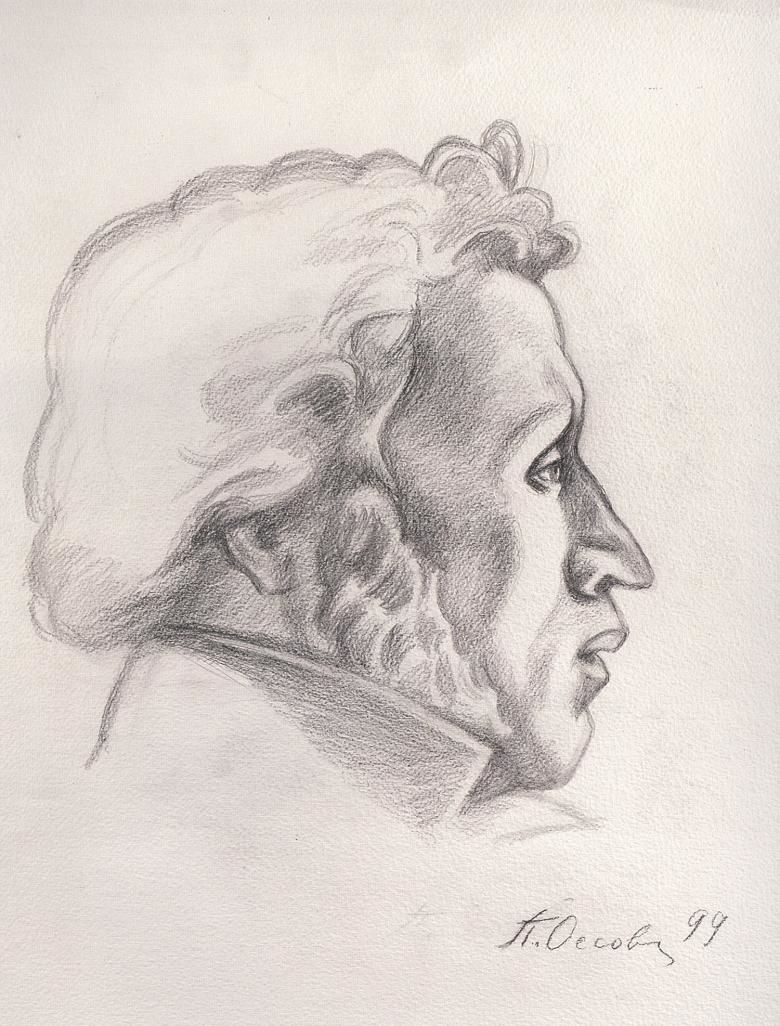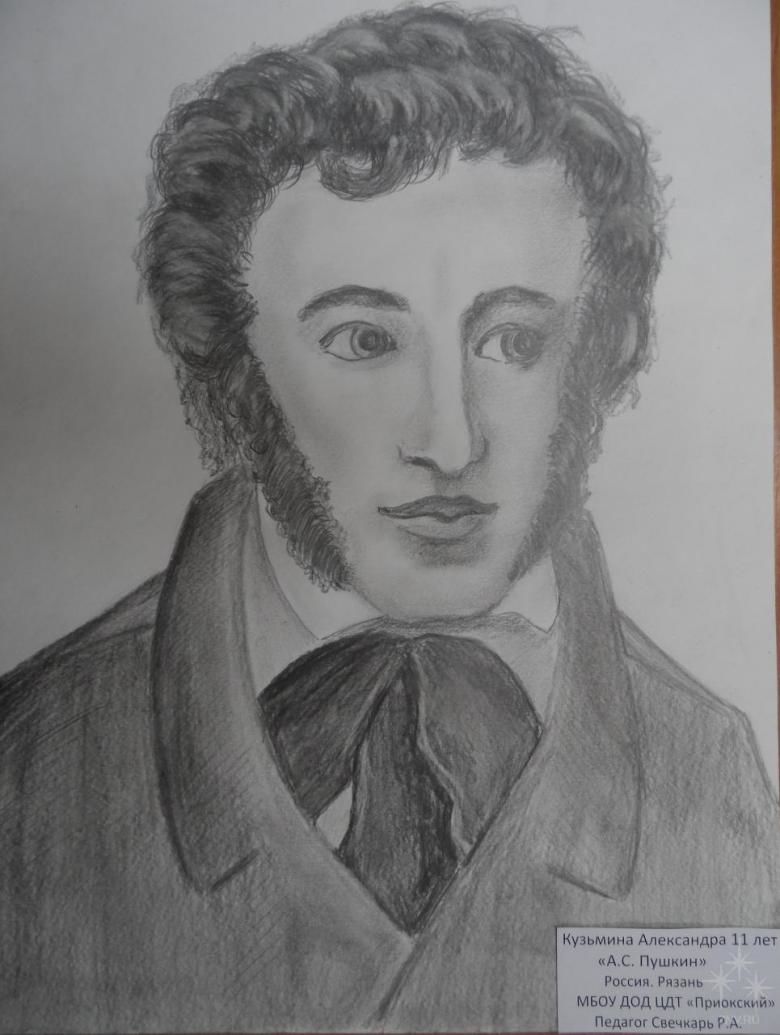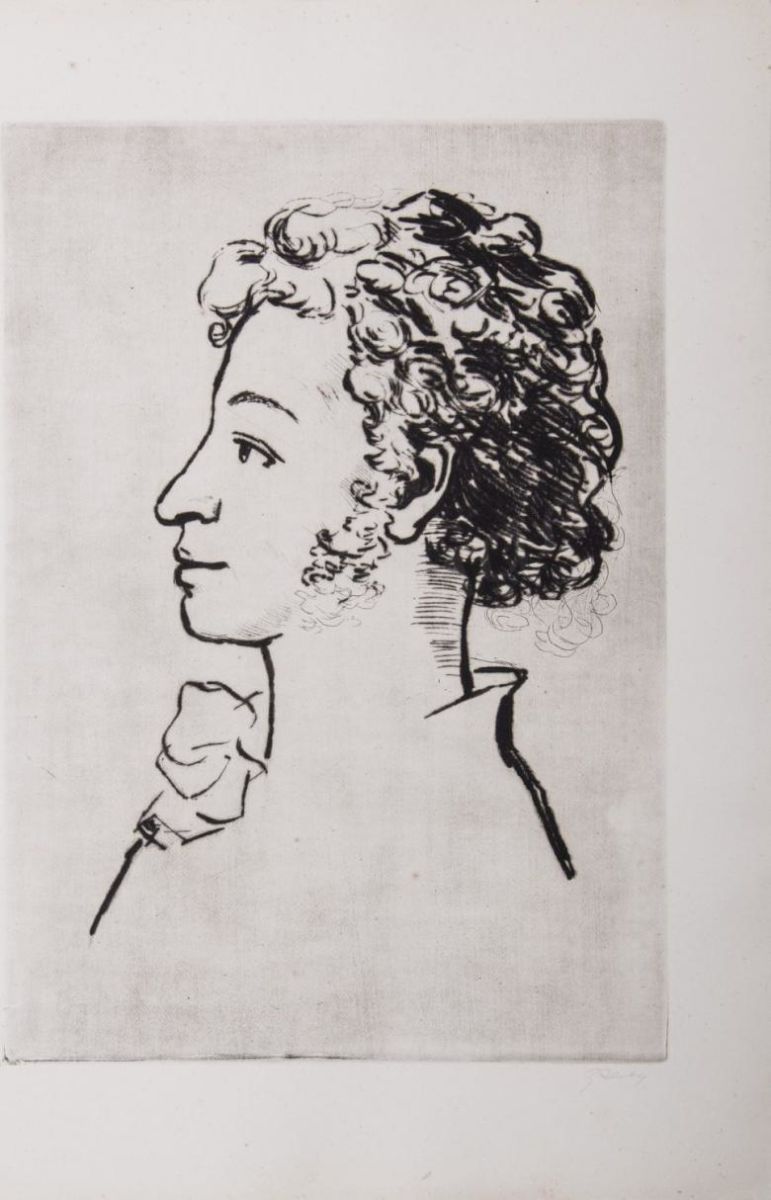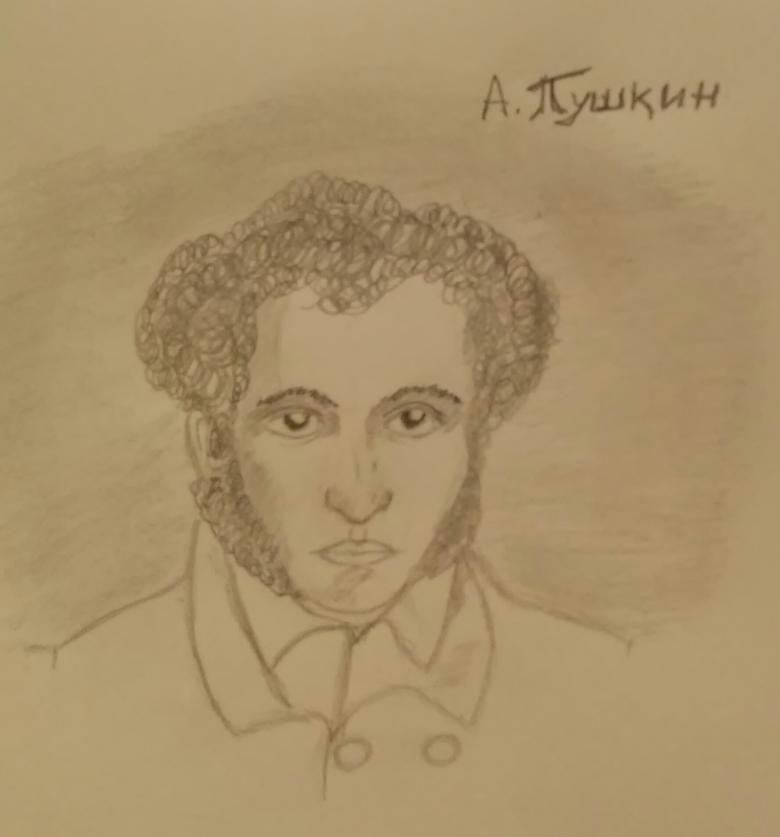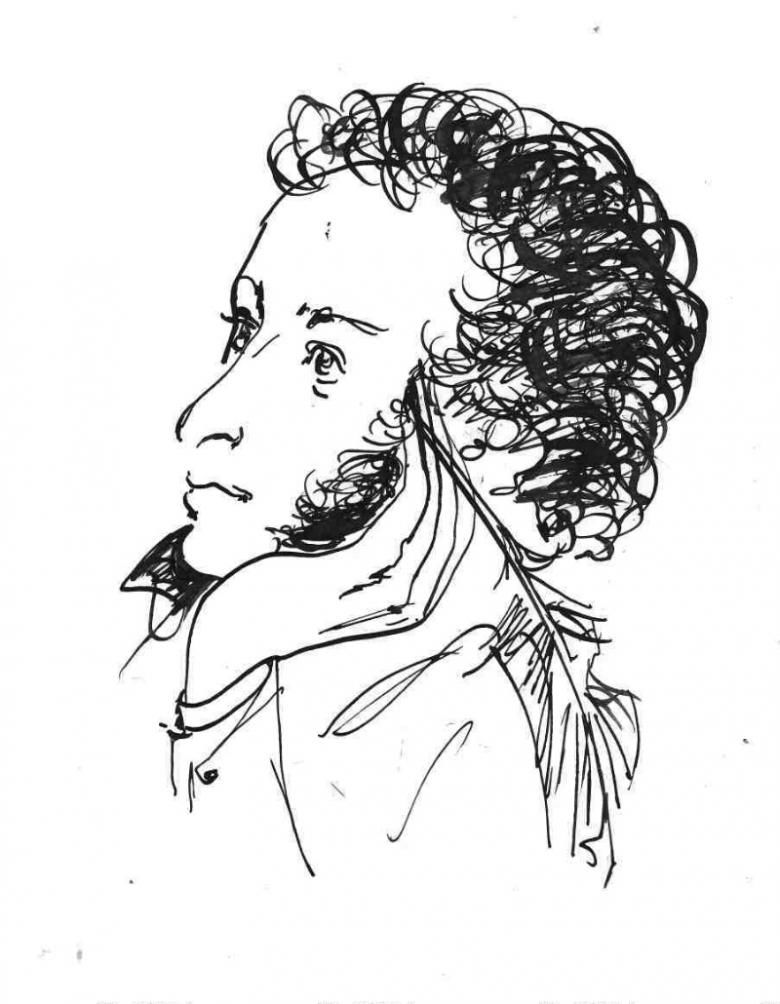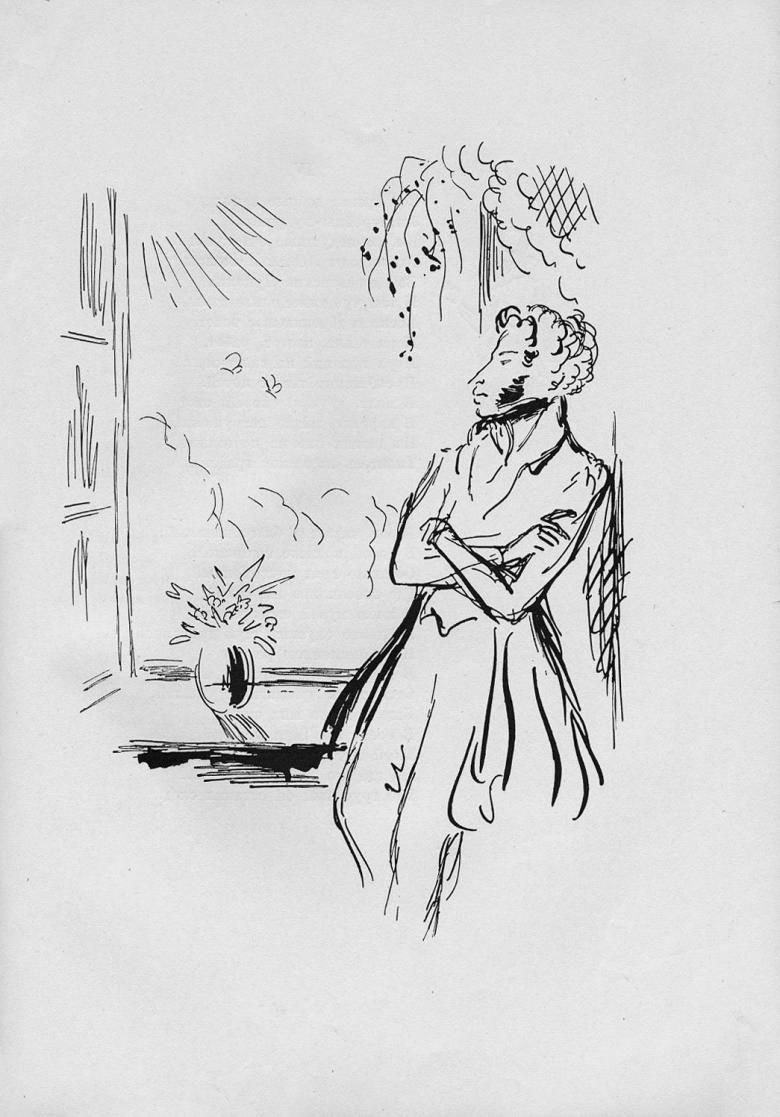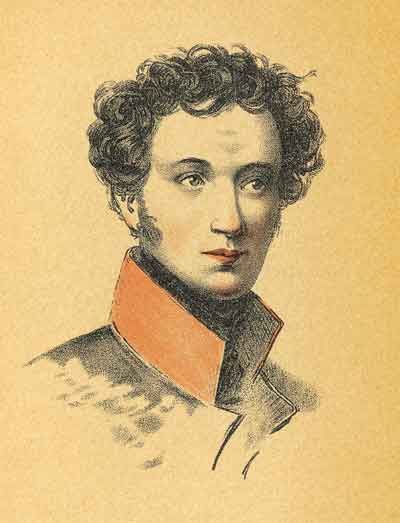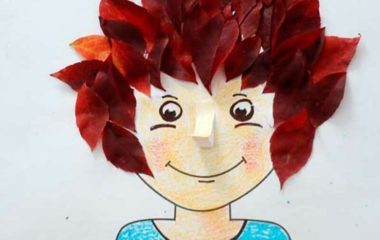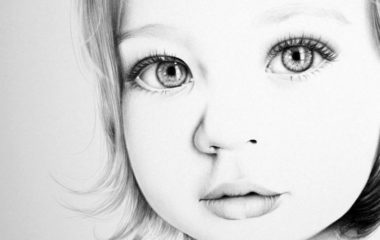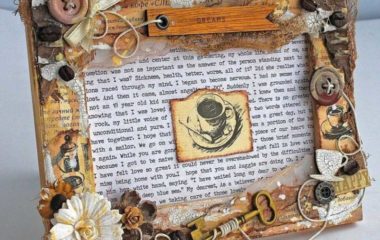How to draw Pushkin: step by step drawing instruction
Everyone in our post-Soviet space is familiar with the work of the great Russian poet Alexander Sergeyevich Pushkin from his school years. Pushkin and his works are also widely known abroad, and it is not at all surprising: his art will not leave anyone indifferent.
In his most famous books, such as "Captain's Daughter", "Eugene Onegin" or "Ruslan and Lyudmila", the poet reflected the mood, the atmosphere of those times, as well as raising eternally relevant topics about love, friendship, war, injustice and other important things, fully reflecting them in the story.
Pushkin's appearance is familiar to almost everyone, because at the time when he lived, many of his portraits were painted. If you want to try to draw Pushkin yourself, you should first study all the portraits of Pushkin in detail.
The nature of Pushkin's appearance.
But when drawing any person, you should always remember one thing: the image of the appearance will not turn out authentic if you do not know the character of the person and his manner of behavior. A person's inner world seriously affects his appearance and leaves a pronounced imprint on his facial features.
Especially noticeable is how a seemingly not very good-looking person from the first sight becomes attractive as soon as we hear his speech, what he talks about, feel his energy and character.
It is clear that we will not be able to communicate with Pushkin, but it is enough to read his biography, read his works and learn what other classics and prominent people of the time said about him, whose statements have survived to this day.
An interesting feature is that Pushkin himself loved to draw. On the sheets where the writing of poems and novels took place, you could often see sketchy portraits of the poet himself.
Looking at Pushkin's portraits in detail, one can notice the following details: he was short in stature, rather thin, but he had a well-built body: strong chest, broad shoulders and a thin waist.
We will need these characteristics in case when drawing Pushkin with his upper body. His curly black curls and sideburns, which were a trend in men's hairstyles in those days, his large nose and generally elongated profile catch the eye.
According to historical data, Pushkin's distant ancestor was a man of African descent. The traits of the Negro race were clearly reflected in Pushkin's appearance, which added color and distinguished him from most Slavic men.
People who saw him in his lifetime noted that he was not very attractive in his appearance. Many noted that his face looked "mocking" and there were even hints of a certain "malice".
The blue eyes looked like glass. He was also noted for his inherent clumsiness and, at times, even rudeness. But his character was very friendly and really was a genius of his work, as most people are convinced.
Preparing to paint a portrait
Honestly, for beginners, Pushkin even in pencil will be very difficult to draw. Especially difficult will be those who have never tried to draw a person and in general are not familiar with the harmonious proportions of the face and torso.
But don't give up, even if your skill in drawing people is at zero. You always have to start somewhere.
Having studied the details of the poet's appearance and character, you should still have a drawing of Pushkin for sketching.
It is even important to arm yourself with a few references, so that the drawn Pushkin will turn out as believable as possible and correspond to the portraits drawn during his lifetime. This is necessary because you need to see the features of the man in different angles and in different lighting.
You will need a sheet of paper, pencils of varying hardness, and a good eraser that won't scratch the paper. Any drawing begins with a sketch.
Among the images of Pushkin, there is a rather famous sketch drawn in ink, which in all likelihood everyone has seen as illustrations of his works or even in a school textbook on Russian literature.
This famous sketch of Pushkin's profile the poet carelessly drew himself with a goose pen in the corner of his draft. You can take it into account when outlining your sketch.
One should think in advance not only about the poet's physique and position in space, but also about the background. This could be numerous bookshelves, a desk with a burning candle on it or a natural landscape behind.
What if Pushkin were dressed in ceremonial costume according to the canons of the time, and in the background there would be a ballroom and elegant ladies in dresses with their husbands, spinning in a dance. It all depends on your imagination.
The work process
When the sketches are ready and all the details are considered in detail, you need to take a new sheet and on it start the embodiment of the great poet. If this is not the first time you are drawing the human body, then you don't even need additional lines for the correct proportions.
But if drawing the body is alien to you, you should mark in advance the auxiliary strokes and lines on the drawing, harmoniously placing Pushkin's body on the sheet of paper.
To begin with, it is necessary to depict the male body in general terms, but not to miss the features that are characteristic of Pushkin: puny, but strong chest, a thin line of the waist and broad shoulders.
It is necessary to follow the following steps:
- The general shape of the body is outlined with a vertical oval. In the middle of the oval a line is drawn with a soft pencil, using a light movement. It will help to maintain the symmetry of both parts of the body, as well as the symmetry of the facial features.
- Shaping the body with lines, it is necessary to adhere to the generally accepted rules of drawing the male body: the head should fit freely in the shoulders twice, the fully opened palm corresponds to the size of the person's face, and the waist, as a rule, is always narrower than the shoulders.
- Once the basic requirements for drawing the male body are met, you must gradually draw the silhouette of the poet, focusing on the original portraits. All lines are made with a soft pencil, without pressing too hard, so that in case of something deficiencies can be removed or corrected.
It is important to take breaks in the process of drawing. During a long time drawing an artist's eyes tend to get "washed out" and it is very difficult to notice mistakes and defects at first sight.
Therefore, it is necessary to leave your work for 15-30 minutes, and then continue the artistic process with a fresh eye:
- When the overall silhouette of the poet is ready, you can proceed to detailing and outlining the special features peculiar only to Pushkin. It is important to set the basis for each detail, but do not go into it too much, but draw only in general outlines. Focusing on all portraits, starting with the nose and the shape of the chin, cheekbones, forehead, the hairline and cheeks, Pushkin's facial features are drawn. Pushkin's nose is quite long and has a hooked nose. Pushkin's mouth is wide with fairly puffy lips. There is a small cavity under the lips and the chin is elongated. In general, the chin is rounded, although there is a bit of angularity. The eyes are oval in shape, and there is a slightly drooping second eyelid. There are raised eyebrows above the eyes. Pushkin has a high forehead, which, by the way, according to many beliefs means a great mind.
- Next, we draw hair and facial vegetation. The hair growth line is high in Pushkin. The hair is very curly and there are extensive sideburns in the cheekbone area. The eyebrows are not too thick and are themselves a little lighter than the hair on the head.
- Now it is time to detail the clothing. In the spirit of the time, a shirt is drawn, a surcoat, and a handkerchief with lapels wrapped around the neck. The coat has large buttons in two rows. The folded arms are also outlined.
Final Steps
In order to make the image look volumetric, not flat, you need to pay attention to the finishing touches: the application of shadows, shading, shredding. It is important to determine in advance in what light shadows are drawn. Falling shadow is always much darker.
Starting with the face, detailing hair, nose, eyes, eyelids, giving volume to the lips and chin. Do not forget about the ears. On clothes to portray natural folds, in some places, creases and wrinkles.
But this has to be done carefully. The creases should give more life to the portrait, not sloppiness and unkemptness.
Hatching shaded areas on clothing should be done with a soft and moderately sharpened pencil. On areas of skin and hair it is better to use a hard pencil for hatching. It is possible to apply shading, but it should be done very carefully, as there is a risk of dirt.

